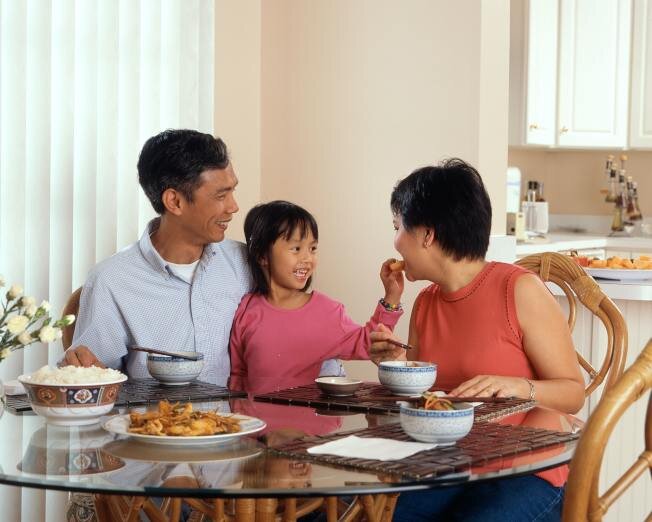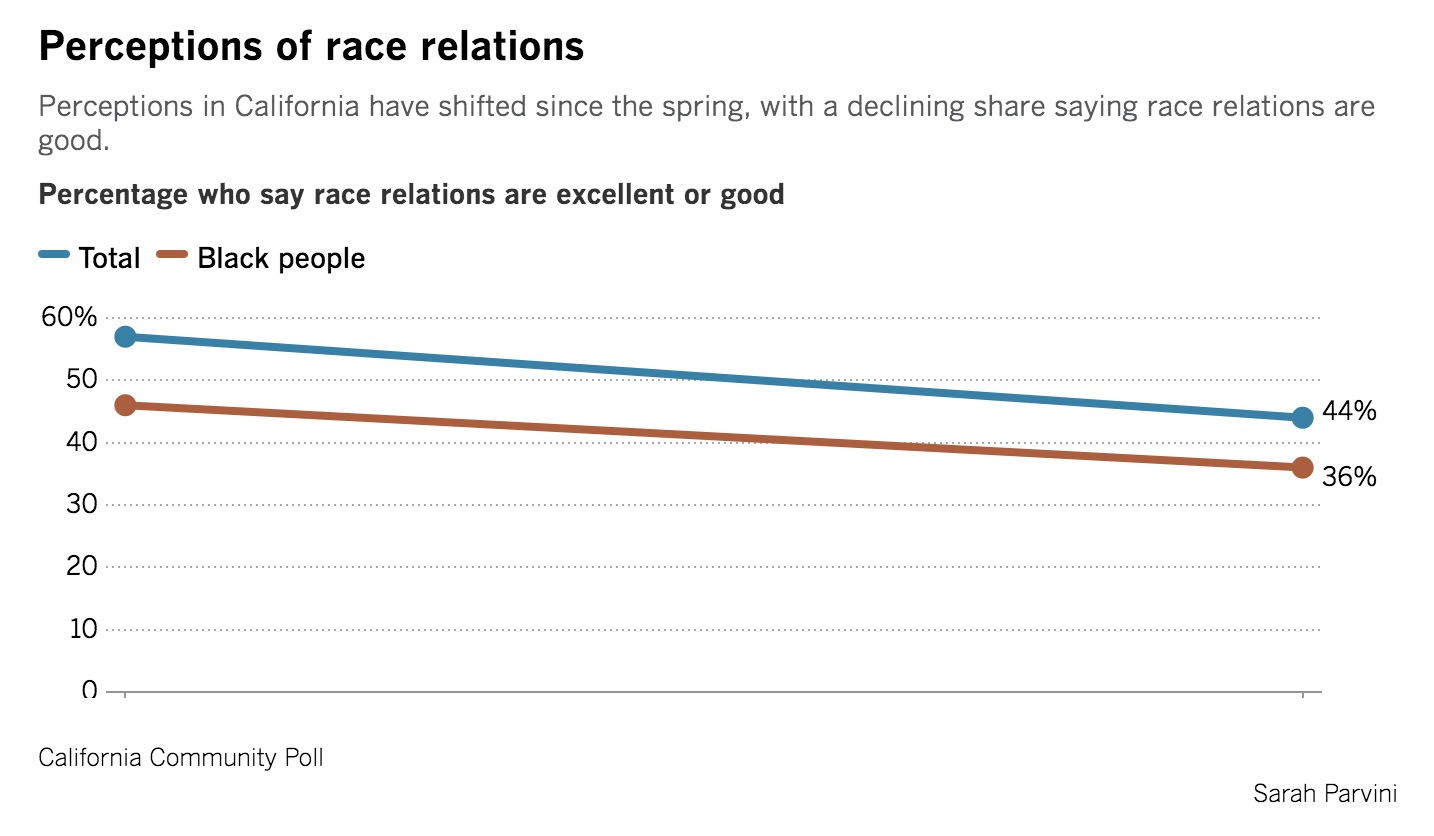Weeks before the start of school, Californians are deeply split over whether campuses can safely reopen amid the ongoing coronavirus surge — caught in a collective moment of uncertainty and anxiety also reflected among teachers and education leaders.
Parents, as indicated in a new statewide poll, are grappling with the prospect of stressful, less effective learning at home — not to mention continued child care woes — and fears that children exposed at school could bring COVID-19 and its potentially deadly risks into their home.
Similar concerns among school workers are expected to crystallize in Los Angeles on Friday morning when the teachers union will recommend a delay in reopening campuses tentatively planned for Aug. 18. For now, learning from home — in place since mid-March — should continue, union leaders said.
The California Teachers Assn. on Thursday made a similar but less explicit statement, saying that conditions for keeping students safe have not been satisfied statewide.
L.A. school officials have not yet made a final decision other than to say that instruction will begin on the first day of school, one way or another.
Yolanda Ford-Swinton, who cares for an 8-year-old granddaughter, exemplifies the angst.
“I do think she needs to go back at least some of the time,” said Ford-Swinton, whose granddaughter attends Cowan Avenue Elementary in the Westchester neighborhood of Los Angeles. “But I’m so afraid because I don’t know what’s going to be in place.”
“Will everyone be tested for COVID-19 when they enter? If they have a fever, will they be sent home? Will there be a full-time nursing staff? It just creates a level of stress.”
Overall, Californians are closely split on whether to continue with distance learning or go ahead with a limited reopening, according to the poll, which was conducted in consultation with The Times.
About 4 in 10 California adults want to stick with full-time distance learning this fall. A similarly sized group favors a limited reopening with students in school on alternating days or on half-day schedules. The staggered schedule would allow schools to comply with social distancing requirements, which typically require students to remain six feet apart.
Fewer than 2 in 10 support having students attend classes full time in person on a daily basis — even if they follow social distancing guidelines, the poll found.
Respondents took part online in the California Community Poll from June 26 through July 6. The survey was commissioned by the Center for Asian Americans United for Self Empowerment, Hispanas Organized for Political Equality and the Los Angeles Urban League. Strategies 360, a California-based polling and political strategy firm, polled 1,184 adult citizens. The margin of sampling error is 3 percentage points.
The question of when and how to reopen campuses has divided experts and roiled politics up to the White House, with President Trump this week threatening to withhold funding for schools that don’t open and challenging the advice of his own experts. He questioned the need for social distancing and labeled the safety guidelines from the national Centers for Disease Control and Prevention as too tough, expensive and impractical. The CDC on Thursday refused to change its guidance.
“It’s clear that most Americans are much more conflicted about how to proceed — whether it’s about wearing a mask or sending their children to school — given the wide range of messages they’re hearing from their elected leaders,” poll director Dan Schnur said.
California officials are contemplating, at best, a hybrid format, with students combining online sessions and work-at-home materials with part-time classes on campuses in small groups.
Alberta Brinson Moore of Leimert Park explained her conflicted sentiments. Her 15-year-old son was “having the time of his life” at Dorsey High School, playing soccer, earning almost all A’s and making friends, despite having to work through attention deficit hyperactivity and a speech disorder.
Since the pandemic, he’s had only three speech sessions, and none of his online instruction has been live: “My son really needs some kind of social engagement.”
“But I’m a realist — we have to see what the numbers are,” she added, referring to the county’s spike in coronavirus infections.
Moore, 58, has diabetes and high blood pressure, and she recently received radiation treatment for breast cancer.
“I’m the person that — something happens, it’s not just gonna be a sniffle,” she said.
In the poll, undertaken before Trump began touting reopening schools, residents of Los Angeles, Orange and San Diego counties — where the toll from COVID-19 has been heaviest — were significantly more in favor of keeping students off campus than residents of other parts of the state.
The poll found only small differences between parents and non-parents on the issue, but significant differences among different groups of parents. Among parents earning more than $75,000, about 3 in 10 supported a full reopening this fall. Among parents earning less than $75,000, only half as many supported reopening.
Black and Asian Pacific American parents were especially supportive of sticking with distance learning, with half or more in those groups in favor. Latino parents were most in favor of a partial reopening, with nearly half supporting that option. Whites, who have been less likely than Black people or Latinos to be hit by the virus, were the most evenly divided, with about 1 in 5 backing a full reopening.
Moreover, the political polarization that has divided Americans on nearly everything in recent years reinforces an urban-rural split, the poll found. Self-identified Republicans and conservatives, who are more likely to live in non-urban parts of the state, were much more likely to back reopening than were Democrats and liberals.
“These poll numbers show that Trump’s call for a full reopening is most popular with men, seniors and rural white voters,” Schnur said. “Trump will almost certainly not win California in November, but the demographic groups that are most supportive of opening the schools are the voters he needs to win in more competitive states.”
But for most — including education leaders — the issues are more pragmatic than political.
“It seems to me that we are ill-prepared for the reopening of schools,” said Lynwood Supt. Gudiel R. Crosthwaite. “Given the increase in rates not only in Southern California but throughout the country, it seems almost irresponsible for schools to open.”
Lennox School District Supt. Scott Price said he’s been involved in discussions with leaders of other school systems and some expect they’ll be ready with some form of hybrid learning, while others say they probably will need to start the school year using distance learning. His school system is working out its strategy for the fall.
Las Virgenes Unified, which straddles the border of Ventura and L.A. counties, announced Thursday that it would offer both a hybrid schedule and online-only instruction — not that it will be easy. The district already has spent $850,000 on safety and health enhancements, while cutting its districtwide budget.
“We’re still running about 70% to 30% in favor of being on campus.” Supt. Dan Stepenosky said. “Schools are critical for both public health and the economy. ... If we don’t open or don’t do it right, both the public health and economy will struggle.”
Antonio Mendez can attest to the economic hardship.
An independent trucker who lives in the San Diego area, Mendez took on responsibility for supervising his children’s studies while his wife holds onto her credit union job. He doesn’t have anyone besides his mother to watch his sons, ages 7 and 12, and he doesn’t want to risk exposing her.
“I don’t want to send my kids to school if there’s any threat of them catching this,” Mendez said.
For now, he wouldn’t feel comfortable even with a partial reopening of schools: “When I go pick up the groceries, I see people outside with no masks on. Those people might have kids. If they’re acting that irresponsibly … and I’ve gotta send my kids to school with those children, I’m not doing that.”
But Danielle Simmons, of San Bernardino, says her children, ages 7 and 10, need to get back to something as close to normal as possible.
“The distance learning,” Simmons said, “it really is a headache.”
Though Del Rosa Elementary provided a laptop and iPad, the family had problems signing into Google Classroom and muting microphones, eating up time and causing frustration.
Besides, her children “need that interaction. ... They need to get out of the house and go back to what they’re familiar to,” she said.
But she will also consider whether the school is operating safely and will keep watch for spikes in the virus, she said.
“Remote education doesn’t work very well for very many kids,” especially for young children and low-income families, said Jesse Rothstein, a professor of public policy and economics at UC Berkeley, who’s had to help manage schoolwork for his own children at home. All the same, “you can’t go to schools if it’s not safe.”
And when it comes to the coronavirus, “there’s a lot of science that we don’t understand.”

















